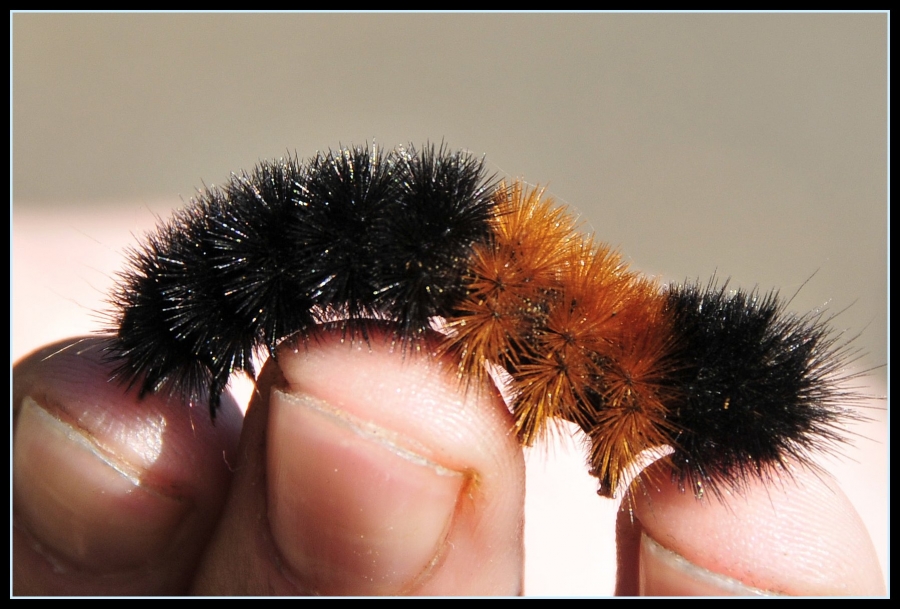Interesting Facts
We chose to research this organism because the banded woolly bear is one of the few caterpillars people can recognize by name. On the other hand, the adult form (isabella tiger moth) is less commonly known but still a common moth. Also, it has a well known legend surrounding it; one that makes this organism an interesting and beautiful creature!
Traditionally the woolly bear caterpillar has been viewed as a method to determine the severity of the upcoming winter. By observing the thickness of the caterpillar's middle brown section, it was said that one could predict how severe the winter would be. Dr. C.H. Curran of the American Museum of Natural History made the woolly bear famous in 1948 when he started measuring the average number of brown segments of caterpillars in the Bear Mountains in New York and would then predict the severity of the upcoming winter (Almanac 2013)
 In actuality, however, the meaning behind the thickness of the
caterpillar's midsection is not altogether known
and does not give any hints as to what the upcoming season will
bring. Nevertheless, one may find still find a correlation between
the the age of the caterpillar and the thickness of the caterpillar's
midsection.
In actuality, however, the meaning behind the thickness of the
caterpillar's midsection is not altogether known
and does not give any hints as to what the upcoming season will
bring. Nevertheless, one may find still find a correlation between
the the age of the caterpillar and the thickness of the caterpillar's
midsection.
The banded woolly bear caterpillar (along with other caterpillars) may resort to cannibalism, which contrasts their typical herbivorous diet (Bugguide 2013). Another interesting fact about their diet is that there is no correlation between survival rate and eating habits (when comparing either a mixed-plant or a single-plant diet) (Singer 2003).
Go to References page
Return to Home page